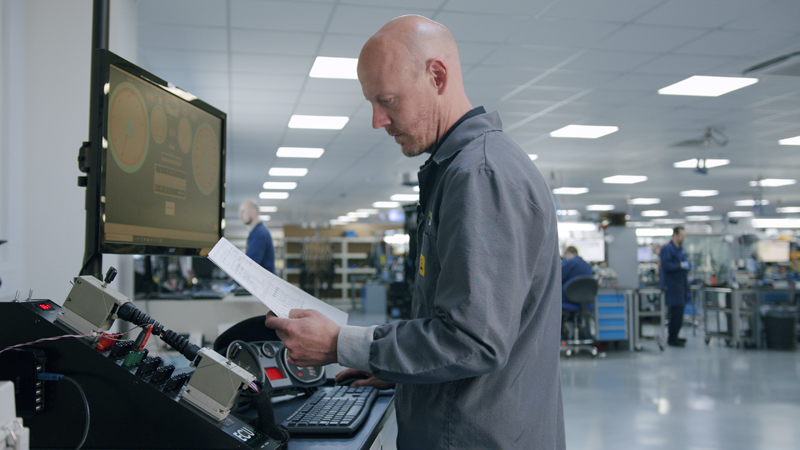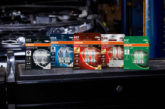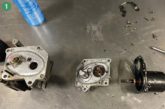
After last month’s introduction, ECU Testing is back in PMM this month to convince you of the merits of opting for a remanufactured ECU as your next replacement. Founder Roger Bagg writes.
As the ‘brains’ of the vehicle, ECU (Electronic Control Unit) failure can cause a variety of issues, from poor performance to complete shutdown. For technicians, achieving a fast, reliable and cost-effective fix for your customer can make or break your reputation. When choosing the right fix for the job, one of the main things to consider is whether to opt for new, used, or remanufactured ECUs.
New, used, or remanufactured ECUs – which is the best option?
Remanufactured ECUs combine the reliability of new parts with the affordability of used ones. But what are they? Essentially, these are existing or used control units that have been restored to their original condition.
Remanufacturing is more than a spit and polish job, though. Parts are disassembled, meticulously cleaned, and inspected for defects. Technicians then replace any worn or damaged components with new or refurbished ones. Each part then undergoes rigorous testing to ensure it meets – or surpasses – original equipment manufacturer specifications. The result is an ECU that performs just like new – or better – but at a fraction of the cost and often with a better warranty. The remanufacturing process:
Step-by-step
Remanufacturing is a precision process, with each step critical to guaranteeing the quality, safety, integrity and performance of the ECU. While each remanufacturer will have its specific equipment and methods, they generally follow these steps:
- Disassembly: Used parts are taken apart by expert technicians.
- Cleaning: Each component is meticulously cleaned to remove grime, debris and buildup.
- Inspection: Specialists assess the part to find signs of wear or damage.
- Repair or replace: Worn components are repaired or replaced, if necessary.
- Reassembly: The parts are carefully reassembled.
- Testing: Final testing ensures they function like new.

Why use remanufactured parts?
Remanufactured parts can save money. When it comes to replacing ECUs, using remanufactured parts can cost substantially less than new components. Despite the cost saving, opting for remanufactured ECUs doesn’t mean compromising quality. The remanufacturing process can mean that parts meet – and often exceed – OEM specifications, providing a high-quality, costeffective alternative to new parts.
Quality and reliability
While many DIY mechanics or car enthusiasts opt for second-hand parts to keep costs low, it is worth remembering that second-hand parts have already been through a cycle of use, and their lifespan can be unpredictable. Remanufactured ECUs have been through thorough reconditioning and strict quality control processes to ensure that they are safe and reliable. Reputable suppliers of remanufactured parts usually provide warranties, adding an extra layer of reassurance that the part is fit for purpose. An extended or lifetime warranty is a badge of confidence from the supplier that their processes result in high-quality, reliable parts.
Sometimes, opting for an OEM part or going directly to the dealer seems the simpler and safer option. It is worth reiterating that the quality of a remanufactured part is at least equivalent to a brand-new OEM part. And, with a fast turnaround and lengthy warranties, ECU remanufacturing is risk-free. Often, remanufacturing helps suppliers to understand what went wrong in the first place and fix any underlying weaknesses or manufacturing flaws.
A more sustainable choice
Choosing remanufactured parts can help reduce the automotive industry’s carbon footprint. In addition to keeping parts out of landfills, research suggests that remanufacturing processes use 20–25 per cent of the energy needed to manufacture the same product because there is less demand for the extraction and processing of raw materials.

Parts availability
Remanufactured ECUs are available for a wide range of makes and models. Suppliers usually work by reverse engineering parts from a range of OEMs to keep up with the latest systems and common faults. At ECU Testing, for example, we take a practical approach to new or emerging issues. When we hear of a new issue, we bring cars into our lab, take them apart, and use our learning to create bespoke rigs that allow us to run comprehensive tests. For older vehicles, where production by the OEM may have ceased, remanufacturing offers the best solution to keep the vehicle on the road.
Choosing the right supplier
As with any purchase, selecting the right supplier is really important. Look for a supplier that invests in R&D to ensure that they have the knowledge, insight and technical capability to repair newer units as they come out of the OEM warranty period.
Check that the supplier meets industry benchmarks. In particular, ISO9001 ensures that the supplier meets stringent quality standards and is committed to continuous improvement. ISO14001 relates to their commitment to environmental excellence, which can be seen in their efforts to reduce waste and energy consumption in their remanufacturing processes.
Check out what kind of warranty the supplier offers. A longer warranty period shows a level of confidence that parts will stand the test of time.
Remanufactured ECUs provide significant benefits. They offer cost savings without compromising on quality. This makes them appealing to budget-conscious consumers and mechanics, who still need the reassurance that the part offers quality, longevity and a comprehensive warranty.









